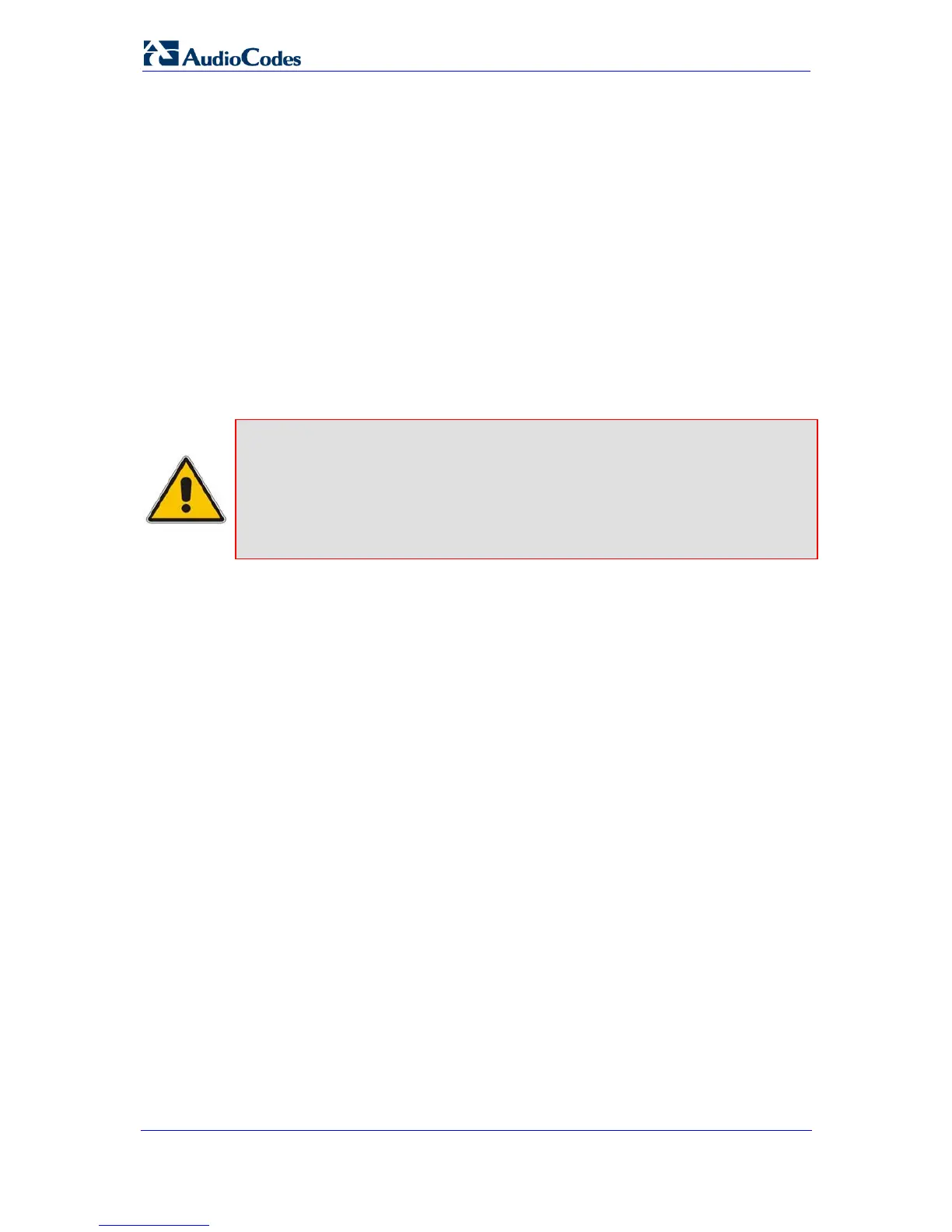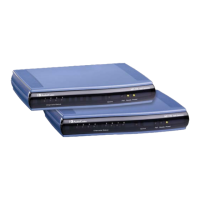SIP User's Manual 388 Document #: LTRT-65412
MP-11x & MP-124
Sending DTMF digits (in RTP packets) as part of the audio stream (DTMF Relay
is disabled): This method is typically used with G.711 coders; with other low-bit rate
(LBR) coders, the quality of the DTMF digits is reduced. To enable this mode, define
the following:
• RxDTMFOption = 0 (ini file); 'Declare RFC 2833 in SDP' field = 'No'
• TxDTMFOption = 0 (ini file); '1
st
to 5
th
Tx DTMF Option' field = 'Disable'
• DTMFTransportType = 2 (DTMF Transport Type = Transparent DTMF)
Using INFO message according to Korea mode: DTMF digits are carried to the
remote side in INFO messages. To enable this mode, define the following:
• RxDTMFOption = 0 (ini file); 'Declare RFC 2833 in SDP' field = 'No'
• TxDTMFOption = 3 (ini file); '1
st
to 5
th
Tx DTMF Option' field = 'INFO (Korea)'
Note that in this mode, DTMF digits are erased from the audio stream
(DTMFTransportType is automatically set to 0 (DTMF Mute)).
Notes:
• The device is always ready to receive DTMF packets over IP in all
possible transport modes: INFO messages, NOTIFY, and RFC 2833 (in
proper payload type) or as part of the audio stream.
• To exclude RFC 2833 Telephony event parameter from the device's
SDP, set RxDTMFOption to 0 in the ini file.
The following parameters affect the way the device handles the DTMF digits:
TxDTMFOption, RxDTMFOption, and RFC2833PayloadType
MGCPDTMFDetectionPoint, DTMFVolume, DTMFTransportType, DTMFDigitLength,
and DTMFInterDigitInterval (refer to ''Channel Parameters'' on page 344)
9.4 Emergency Phone Number Services
The device supports various emergency phone number services such as 911 (in North
America).
9.4.1 Enhanced 911 Support
The device supports the North American emergency telephone number system known as
Enhanced 911 (E911), according to the TR-TSY-000350 and Bellcore's GR-350-Jun2003
standards. The E911 emergency system automatically associates a physical address with
the calling party's telephone number, and routes the call to the most appropriate (closest)
Public Safety Answering Point (PSAP), allowing the PSAP to quickly dispatch emergency
response (e.g., police) to the caller's location.
Typically, the dialed emergency number is routed to the appropriate PSAP by the telephone
company's switch, known as a 911 Selective Router (or E911 tandem switch). If the PSAP
receives calls from the telephone company on old-style digital trunks, they are specially
formatted Multi-Frequency (MF) trunks that pass only the calling party's number (known as
Automatic Number Identification - ANI). Once the PSAP receives the call, it searches for the
physical address that is associated with the calling party's telephone number (in the
Automatic Location Identification database - ALI).

